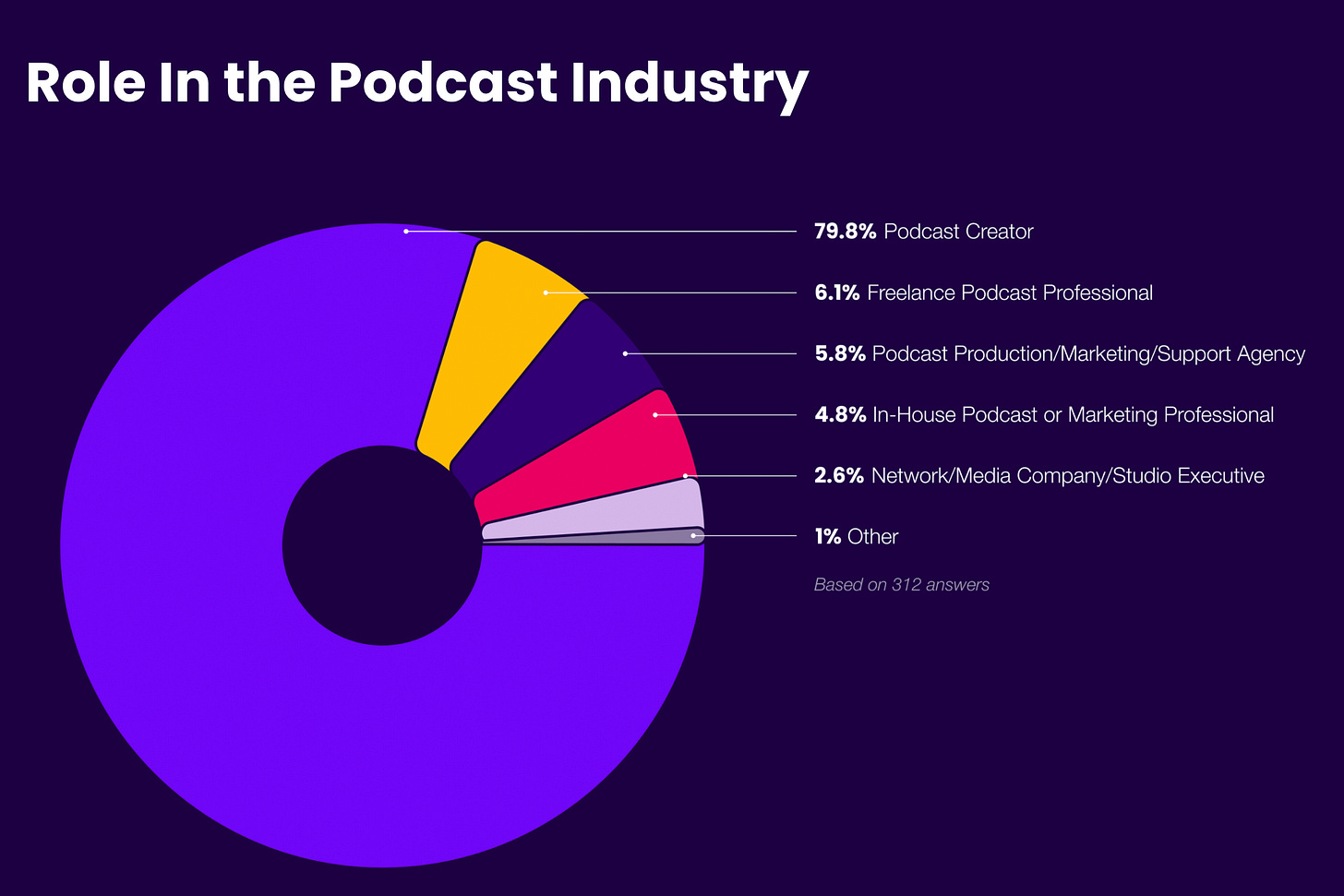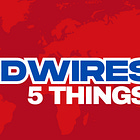The Video Podcast Gold Rush Just Hit Bedrock: New Data Reveals The Real Cost of Chasing YouTube
This piece is freely available to read. Become a paid subscriber today and help keep Podwires financially afloat so that we can continue to pay our writers for their insight and expertise.
Everyone’s losing their minds over video podcasting. YouTube’s the promised land. Spotify’s pushing video hard. Every podcaster with a Ring Light and a dream thinks they’re one camera away from blowing up.
Here’s the uncomfortable part: new research shows video podcasts cost 77% more per hour of audience attention than audio-only shows. Let that sink in.
Before you dismiss this as anti-video propaganda, understand what we’re really talking about here: return on investment. And the numbers don’t care about your feelings or the latest guru telling you to “just add video.”
Podcast Marketing Trends surveyed 308 podcasters across diverse formats and experiences to determine the actual ROI of audio-only versus audio/video podcasting. The comprehensive analysis examined production costs, team sizes, audience consumption patterns, and cost-per-hour-of-attention to reveal which format delivers better value for creators.
The Key Points:
Audio/video podcasts cost 3.6x more per episode to produce than audio-only shows ($1,091 vs. $303 average monthly budget)
Despite higher costs, video shows generate 49% more audio plays and earn significantly more total consumption time (1,396 hours monthly vs. 984 hours for audio-only)
The cost efficiency gap is stark: audio/video shows cost 77% more per hour of audience attention gained, undermining the perceived ROI advantage
Top-performing audio/video shows (10k+ YouTube views monthly) average $3,303/month production budgets versus $922/month for comparable audio-only shows—still maintaining that 3.6x cost differential
Audio accounts for 59% of plays but 78% of consumption time for audio/video shows, proving audio remains the superior attention-holding medium even when video is available
Why It Matters: The podcasting industry is sprinting toward video based on platform pressure and creator FOMO, not cold hard economics. This research reveals a truth most people don’t want to hear: adding video makes you work harder for every minute of attention you earn. For creators operating on tight budgets or lacking substantial teams (the median show in both categories still runs on just $300/month), chasing video might drain resources that could build better audio content, stronger marketing, or deeper audience relationships. The data suggests video podcasting isn’t the democratizing force it’s sold as—it’s actually widening the gap between well-funded shows and scrappy independents trying to compete.
The Big Picture : For podcasters and producers, this research should fundamentally reshape how you evaluate the video question. Stop asking “Should I do video?” and start asking “Do I have 3.6x more budget to spend per episode?” Because that’s the actual cost of entry. The shows winning at video aren’t succeeding because they added cameras—the data strongly suggests they already had substantial revenue and audiences before moving to video, then used those resources to expand formats. Fair play to them.
Here’s what’s actionable: If you’re producing audio-only content, you’re not falling behind. You’re choosing a format that delivers better ROI per attention hour. Focus obsessively on the fundamentals—better titles, packaging, hooks, pacing, storytelling. Interestingly, these are the exact skills video podcasters develop to compete on YouTube’s transparent algorithm. You can learn from their playbook without buying into their cost structure.
For producers, the 63% higher full-time employee support and 600% more agency help that audio/video shows require should inform your pricing and capacity planning. Video isn’t just “turn on the camera”—it’s an entirely different production paradigm requiring different skills, workflows, and support infrastructure.
For the industry, we need to stop treating video as the inevitable future and audio as the legacy format. Audio still dominates consumption time even among video podcast audiences. The platforms pushing video hardest (YouTube, Spotify) care about their economics, not yours. They want your content competing in their attention economy on their terms.
The quirks matter. Audio-only podcasting remains a powerful, cost-effective, high-attention medium. Don’t let platform pressure or creator comparison convince you otherwise—unless you’ve got the budget to back it up.
REALLY? Yes. Really.
Not ready to be paid subscribe, but appreciate the newsletter ? Grab us a beer or snag the exclusive ad spot at the top of next week's newsletter.







